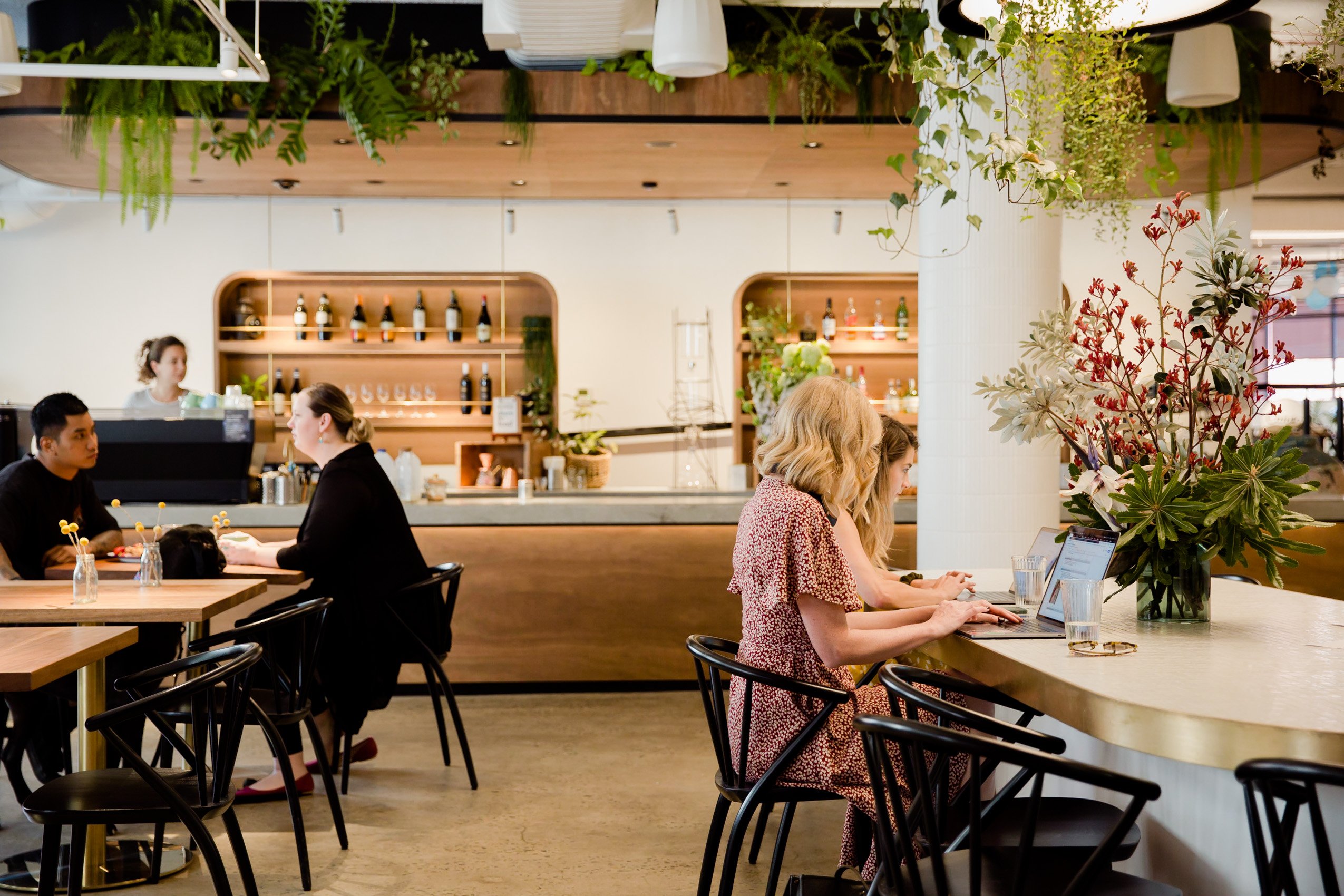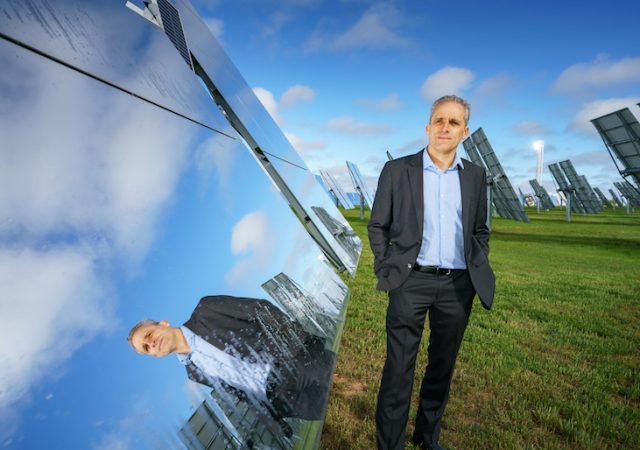For Earth Day 2021, we asked Canva to share the story of how they’re tackling their goals to leave a better planet under the direction of their Global Sustainability Lead, Jared Ingersoll. Here’s what he said
Canva said it would be carbon neutral by 2020 — and it was.
The US$15 billion company’s next big step is to take this even further, pledging to become climate positive by 2023 — and the good news is that it’s well on its way. Not only will Canva be carbon neutral, the company will actively be removing additional carbon dioxide from the environment.
Canva’s commitment to sustainability is such that it has established a dedicated division headed up by well-known Chef, food and sustainability activist Jared Ingersoll.
Ingersoll, Canva’s Global Sustainability Lead says, “If going carbon neutral is complicated and expensive, becoming climate positive is even harder.
“It’s difficult for any business, large or small, to become carbon neutral, let alone climate positive. Big companies have bigger problems, smaller companies have less resources. Nevertheless, we refuse to do this as a box ticking exercise,” he said.
“Our current efforts extend far beyond our sense of corporate responsibility when it comes to supply chain logistics, labour, energy and materials. One of Canva’s core values is to ‘be a force for good’ and it’s a statement that steers all of the decisions we make, the goals we set, and the culture we create as a company.”
So how is Canva achieving its ambitious sustainability goals, and why has the company made sustainability a priority?
Championing a sustainable printing industry
“Anyone in the business of printing must also be in the business of sustainability,” says Ingersoll, which is why reducing environmental impact and leading with sustainable practices has been a primary focus for Canva’s printing division.

Jared Ingersoll, Canva’s Global Sustainability Lead
The printing industry has traditionally been rampant with unsustainable practices from wastage to the types of ink, paper, fabrics and dyes used, as well as the carbon emissions caused by international shipping logistics.
With this in mind, the company has established a print-on-demand service with the goal of actively reducing its environmental footprint and setting a new standard for omnipresent companies in the printing industry.
Canva has set out on an ambitious mission to transform the industry – reducing and offsetting environmental impacts through a range of initiatives including its Print Supply Partner network.
To avoid the estimated 80% of emissions caused by international shipping, the company selects its printing partners with sustainability as one of the key criteria for inclusion as part of the network. Printing partner facilities are routinely audited for strict compliance across a number of environmental laws and policies.
As well as this localised printing network, the company also prints on papers using sustainable sources, including post-consumer waste while sourcing apparel from sustainably grown cotton and packaging from recyclable materials. To ensure the lifelong sustainability of any goods, Canva also uses a 100% non-toxic water-based biodegradable ink.
When it comes to packaging, Canva has also eliminated all plastics by switching plastic shrink wrapping to paper belly banding, reducing the size and adding zipper seals to all of our outer boxes to eliminate the need for extra filler and sticker seals or tape.
One million trees planted
As well as switching to sustainable printing alternatives, Canva has launched the very first one-for-one reforestation project of its kind.
To help take the guesswork out of sustainability, Canva is now planting a tree for every print order placed, ensuring not only a neutral offset – but a positive contribution to reforestation sites across Kenya, Mozambique, Madagascar, and Haiti, made possible through Canva’s partnership with Reduce. Reuse. Grow. Inc.
By working in these countries, Canva will help restore and rejuvenate vulnerable ecosystems, contribute to the fight against climate change by planting carbon-sequestering forests and mangroves, and deliver ecological and social benefits to local populations.
Canva’s Sustainability-as-a-Service partner, Reduce. Reuse. Grow. Inc., and their partners only employ local staff to carry out the planting, ensuring they contribute to a regional economic boost. In addition, all planting sites and projects are annually certified by third-party groups to ensure transparent and truthful restoration.
One Print, One Tree by the numbers
- Over one million trees planted in 2021, this alone will sequester to more than 100,000 tons of carbon
- 3.4 kg (7.4/lbs) of carbon sequestered per tree per year
- 84 kg (185.2/lbs) of carbon sequestered for every print order placed based on each tree’s 25-year average lifespan
Creating an eco-friendly office
In 2021, Canva’s Australian operations were transitioned to 100% renewable energy, with Canva’s additional offices in the Philippines, China and the US set to transition in the very near future.
A range of energy saving initiatives have been introduced, including switching to LED light bulbs, and upgrading the air conditioning systems to use power saving variable speed drives. While these might seem like small changes, they’re already having a positive impact on the company’s carbon footprint, signifying that steps towards tangible change can be both big and small.
Office waste management systems have had a makeover too, with the company implementing new initiatives to ensure the correct disposal of eWaste and composting of organic waste, as well as removing all single use plastics. We’re currently working to achieve the same in our global offices.
“Where we weren’t able to change our practices, we purchased carbon offsets (credits) to make up the difference,” adds Ingersoll.

Canva’s Sydney kitchen is where everyone meets to eat and share stories
Farm to Plate sustainability
Canva’s kitchens provide breakfast and lunch each day. In its Sydney office, 70% of produce is sourced from Canva’s organic farm. Leftover food is made available to staff to take home and Canva’s offices have also partnered with local zero food waste charities in each location.
All other food and beverages are sourced from local suppliers who manufacture their products ethically, including Canva’s very own honey sourced from a beehive located on the rooftop of the company’s Sydney office.
Community partnerships and volunteering
Canva’s team get their hands dirty through volunteer days at Hebron Farm, the company’s organic produce partner in the Hawkesbury Valley, New South Wales, and go on excursions to sustainability partner, Black Duck Foods in Mallacoota, Victoria.
Black Duck Foods is an indigenous social enterprise founded by academic and Dark Emu author Bruce Pascoe and business partner Noel Butler. Canva has provided seed funding (pun intended) for crops of native species, such as Kangaroo Grass and mandadyan nalluk grass (known as Dancing Grass), with a view to learning more about traditional land management and regenerative cropping practices while providing employment opportunities for local community members. Black Duck’s philosophy is all about empowering people and demonstrating the value of traditional knowledge, while protecting the chain of custody across their supply chain.
‘An enormous social and moral responsibility’
“What inspires me the most about what we are doing at Canva is that we are demonstrating values and leadership; we’re not just talking about them,” says Ingersoll.
“Anyone with enough money and resources can make a change — and there are certainly opportunities and privileges that come with being one of the world’s fastest growing companies — but it always comes back to our core values of empowering others and being good humans. If we only fix our patch, nothing will change.
“The solutions we have discovered on our journey to becoming a more sustainable company are not ours to own — it’s our responsibility to share them and to encourage others to follow in the same footsteps. Each of us has an enormous social and moral responsibility to do our part in protecting the planet, and it’s a responsibility we take incredibly seriously
You can read more about Canva’s sustainability practices and progress on the above goals here.




















Trending
Daily startup news and insights, delivered to your inbox.